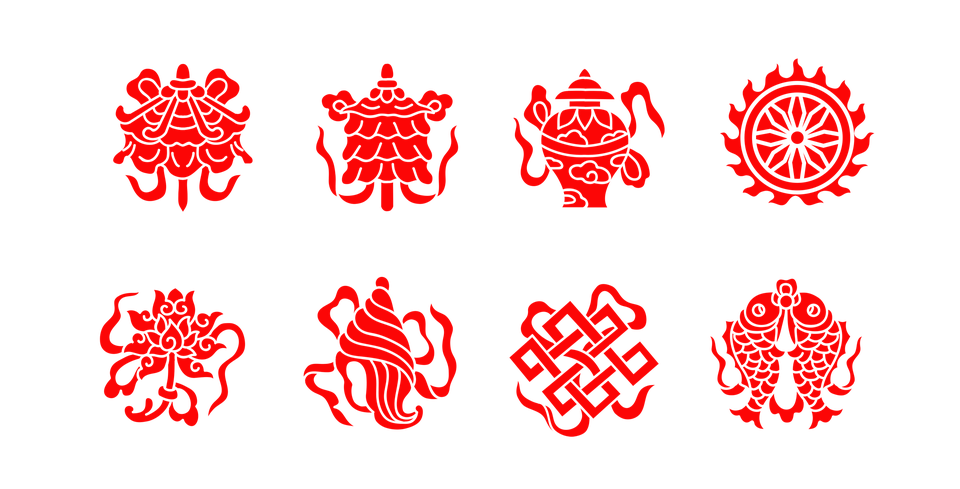Representative of the rich tradition of symbolism in Buddhism, the eight auspicious symbols depict gifts from the gods to Shakyamuni Buddha at the time he attained enlightenment. Said to be the most popular group of Buddhist symbols the eight auspicious symbols of “good fortune” each possess unique qualities in color and form. The eight auspicious symbols are:
Auspicious Drawing
Also known as the Endless Knot, this picture includes a lattice-like drawing with ribbon threads and represents the intersection of religious principles and secular matters.
The Auspicious Drawing also symbolizes the joining of wisdom and method, the “inseparability of emptiness”, and upon enlightenment, the union of compassion with wisdom.
Golden Fish
An image of two fish, it represents the goodness of living beings who are fearless and in no danger to “drown in the ocean of sufferings”. Instead, beings are free to roam as they wish like fish swim fearlessly through water. Early Christianity began using fish as symbolic of Christ.

Right-Coiled White Conch
This image is a seashell that signifies the expansive and beautiful sound of the teachings of Dharma, which reach out to all Buddhist followers to awaken them from their sleep of ignorance. Also, the conch aids worshippers to take care of themselves and others.
Victory Banner
The Victory Banner represents victory gained over issues and negativities using one’s own and others’ bodies, voices, and minds. The victory of Buddhist Doctrine over destructive, unfriendly forces is also represented.
Precious Umbrella
The image of the umbrella stands for the healthy aspect of protecting beings from sickness, negative powers and obstructions in this life. In addition, the umbrella assures safety from many short-term and long-term sufferings and desires.
Vase of Treasure
The vase connotes a never-ending long life, perpetual wealth and riches, and the assets of the world and freedom.
Lotus Flower
Denoting purification of all that disgraces the body, speech, and mind, the lotus flower is one of the eight auspicious symbols. The lotus also stands for the full “blossoming” of nourishing behaviors and perfection. The color of the lotus-white, red, blue, or pink-is indicative of particular meaning of the symbol.
Picturing objects in tandem from the sacred and secular Buddhist cultures, the imagery of the eight symbols are seen in a variety of combinations-singly, in pairs, four at a time, or all 8 together.
For more information on the symbols and to view them, see www.exoticindiaart.com. Believed to bring safety and security where they are displayed, the eight auspicious symbols stand as easily identifiable representations of Buddhism.





